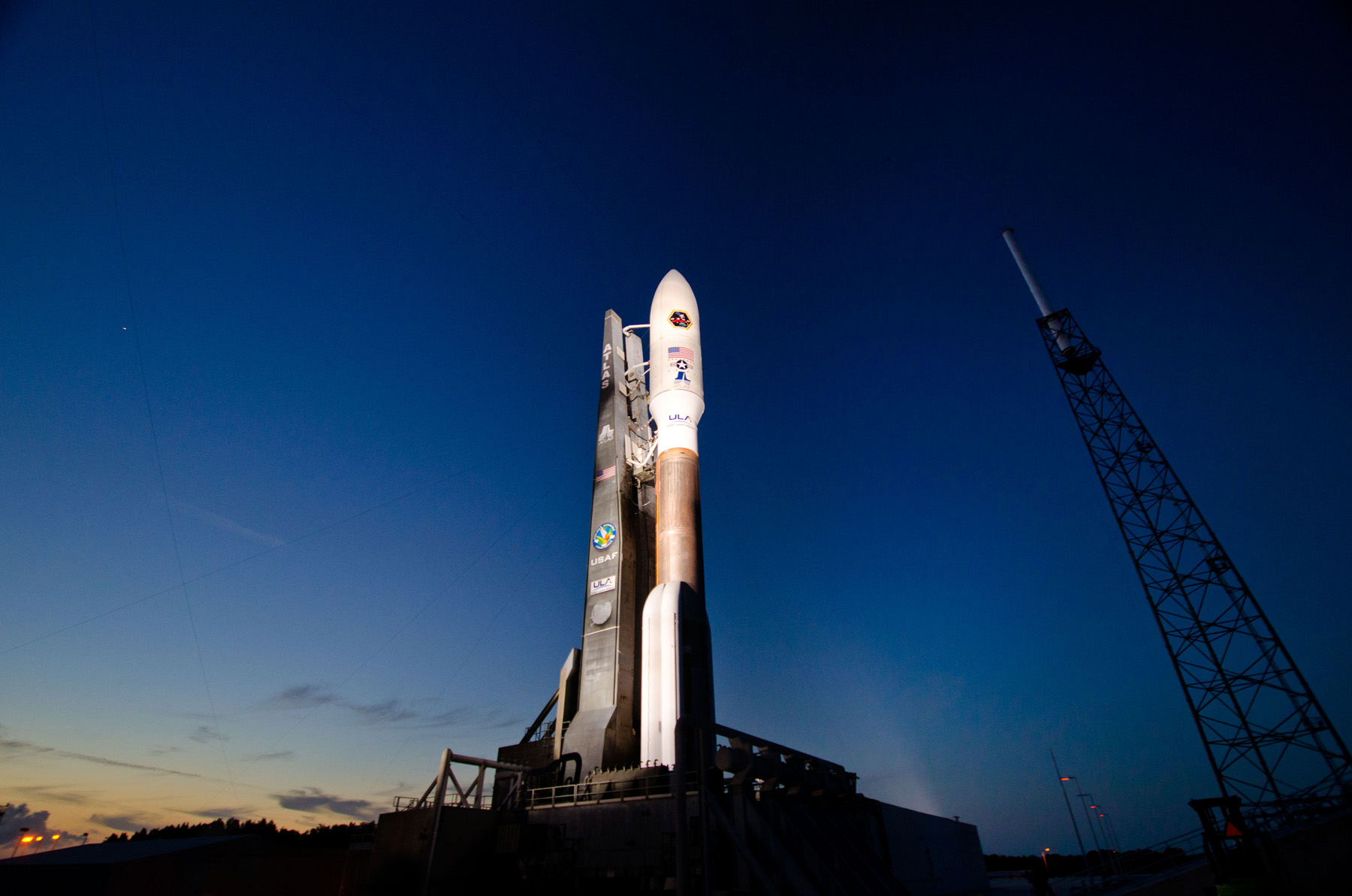
The U.S. Air Force has postponed the planned launch of an advanced new communications satellite by at least one day due to a technical glitch that cropped up during an attempted liftoff today (May 3).
The Air Force's Advanced Extremely High Frequency 2 (AEHF 2) satellite was supposed to blast off at 2:46 p.m. EDT (1846 GMT) from Florida's Cape Canaveral Air Force Station atop an Atlas 5 rocket. However, the launch team detected a flow problem in one of the Atlas 5's systems, and engineers weren't able to fix it in time to get off the ground today.
AEHF 2 will try again Friday, beginning at 2:42 p.m. EDT (1842 GMT), officials said.
The $1.7 billion satellite is part of the AEHF network, which could ultimately include up to six spacecraft. The new constellation is an upgrade over the military's current Milstar system of five functioning satellites, the first of which reached orbit in 1994. AEHF 1 launched in August 2010.
AEHF will provide global, secure, jam-resistant communications for military operations on land, sea and air, officials said. The network features the highest levels of encryption, and it will allow commanders to control their forces "at all levels of conflict through general nuclear war," according to an Air Force fact sheet.
Launch provider United Launch Alliance will webcast the AEHF 2 satellite launch attempt here on Friday: http://www.ulalaunch.com/site/pages/Multimedia_Webcast.shtml
You can follow SPACE.com senior writer Mike Wall on Twitter: @michaeldwall. Follow SPACE.com for the latest in space science and exploration news on Twitter @Spacedotcom and on Facebook.
Get the Space.com Newsletter
Breaking space news, the latest updates on rocket launches, skywatching events and more!
Join our Space Forums to keep talking space on the latest missions, night sky and more! And if you have a news tip, correction or comment, let us know at: community@space.com.

Michael Wall is a Senior Space Writer with Space.com and joined the team in 2010. He primarily covers exoplanets, spaceflight and military space, but has been known to dabble in the space art beat. His book about the search for alien life, "Out There," was published on Nov. 13, 2018. Before becoming a science writer, Michael worked as a herpetologist and wildlife biologist. He has a Ph.D. in evolutionary biology from the University of Sydney, Australia, a bachelor's degree from the University of Arizona, and a graduate certificate in science writing from the University of California, Santa Cruz. To find out what his latest project is, you can follow Michael on Twitter.










